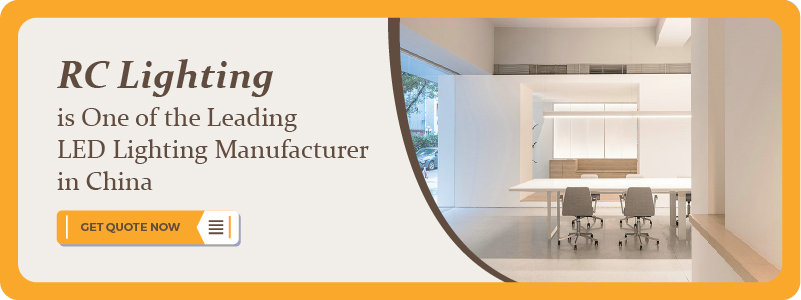This guide will give you all the information you need to know about LED downlights, including what they are, their various types, and their pros and cons. You will also learn some general tips for choosing downlights that are right for your space and how to install them.
What Are LED Downlights?
LED downlights are a type of lighting typically installed in the ceiling, frequently recessed. When most people discuss downlights, they refer to recessed downlights—technically speaking. However, they do not have to be recessed as long as the light points down. That said, if a company advertises downlights, you can expect them to be recessed.
If you want downlights that swivel or attach directly to the ceiling instead of a recess, you can also find those. You can also typically adopt a standard downlight to be used like that. You would install it directly on the ceiling instead of in a recessed hole.
As the name implies, be an LED downlight, the light is an LED instead of another bulb. LED stands for light-emitting diode, which are popular for its efficiency and quality.
You may also hear downlights called by the following names:
- Can lights
- Pot lights
- Recessed lights
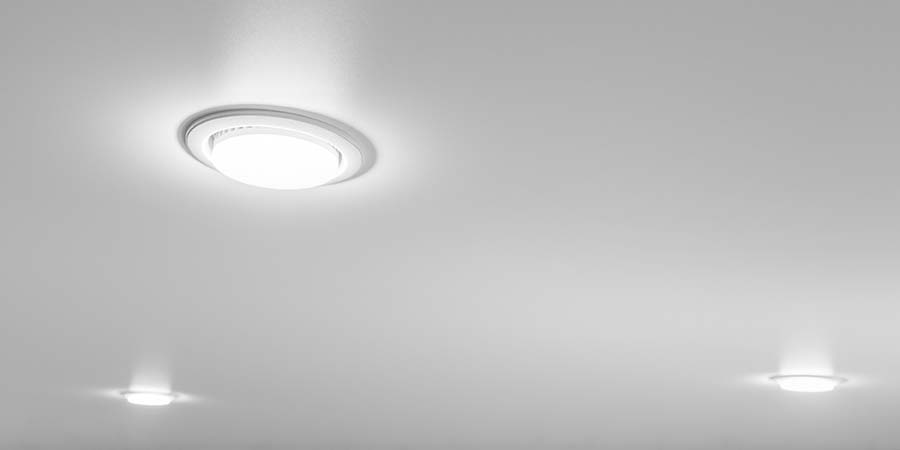
Downlights vs. Spotlights
LED downlights are commonly compared to spotlights because they have similar designs. Also, spotlights can be recessed sometimes, increasing the confusion between the two styles.
The most significant difference is that you can only use a spotlight to highlight an object. By contrast, you can use downlights to highlight objects, draw focus, or cast light. Downlights are also unlikely to cause glare, while spotlights are possible depending on the angle.
Terms to Know
The following terms are helpful for understanding LED downlights, as well as lighting in general:
- Accent lighting – This type of lighting highlights an object or area.
- Beam angle – The spread of the light source. For reference, standard GU10 bulbs typically have 38-degree beam angles.
- Brightness – This is a measure of a display screen’s visual intensity.
- Cap – The portion of a bulb that connects with the fitting.
- Ceiling light – A light attached to the ceiling.
- Color rendering index – How accurately the light displays colors. High CRI lights are more common for exhibitions and photographs.
- Color temperature – A measurement of the warmth or coldness of a light. Warmer lights have lower measurements (in Kelvins).
- Compact fluorescent light (CFL) is a more compact and efficient alternative to fluorescent lights. CFLs are less efficient than LEDs, though.
- Dimmer – Dimmers let you adjust the brightness of the light.
- Equivalent wattage – Many lighting manufacturers use this to help consumers understand the light’s brightness. It lets you compare LEDs to traditional bulbs.
- Fluorescent – A type of light that is typically tube-shaped. • Fluorescent lights contain mercury gas.
- Halogen – A type of light bulb that uses halogen gas.
- Heat sink – These draw heat from part of the electronic circuit. Placing one in a circuit with LEDs can improve the life span of the LEDs.
- Incandescent – The oldest variety of light bulbs. They are highly inefficient and get extremely hot.
- Ingress protection (IP) – The bulb’s amount of protection is based on the rest of the fixture. It measures protection against dust or objects and water.
- LED – Light-emitting diode is a popular and efficient type of lighting.
- Lumens – This measures a light’s visible intensity or brightness.
- Rated life – The expected life span of a light, typically measured in hours.
- Recessed lights – Lights that are set back so they sit flush with the surface of the ceiling or wall.
- Retrofit – New lights that are compatible with the wiring and fittings of previous ones. Most LED downlights can retrofit other types of downlights.
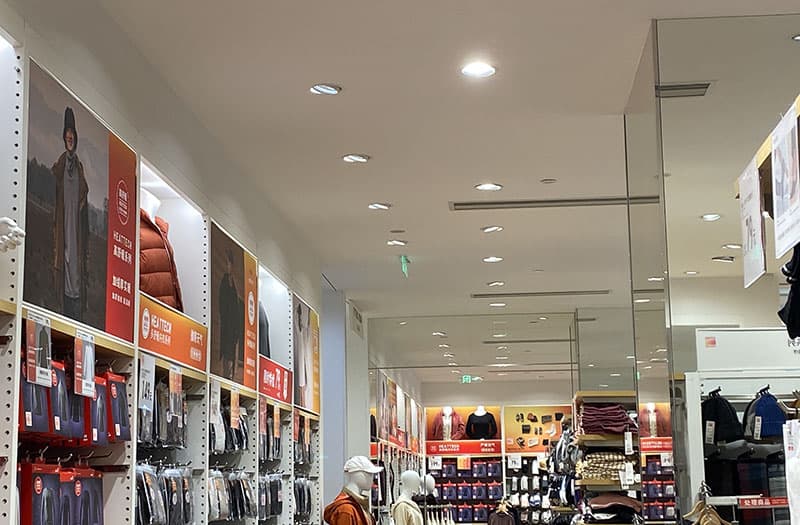
The Pros and Cons of LED Downlights
The following outlines some of the advantages and disadvantages of LED downlights. You will notice that this type of lighting includes all of the pros of LEDs in general and the additional benefits of their style.
Pros
- Multiple options available: One of the good things about the popularity of this type of lighting is that it means numerous options are available. To start, you can choose from one of the types outlined below. From there, you can also usually choose a bezel finish that matches your space.
- Unobtrusive: Because LED downlights are recessed into the ceiling, they are unobtrusive. They will not stick out from the ceiling. This maintains clean lines in the space and prevents the risk of someone hitting their head on the light or the need to opt for short furniture.
- Great for low ceilings: These recessed downlights do not jut out past the ceiling, making them ideal for any space with low ceilings.
- Modern styling: The fact that this type of light is unobtrusive also helps give your space a modern feeling.
- Efficiency: As LEDs, you get to take advantage of the improved efficiency of this type of light. Research shows that LEDs are 80% more efficient compared to incandescent bulbs. That will reduce your electric bills. It will also reduce your impact on the planet.
- Long life span: The fact that LED downlights are LEDs also means that they have a much longer life span than traditional halogen or fluorescent lights. This reduces their overall cost per year of use. It also saves you the hassle of finding a ladder and replacing the bulbs or fixtures as frequently as the need for downtime. For reference, LEDs can last up to 100,000 hours, although at least 50,000 is the norm. By contrast, incandescent light bulbs will only last for up to 2,000 hours.
- More durable: LEDs are less likely to suffer damage in addition to lasting a long time without any damage. This comes from the fact that they emit solid-state light compared to the delicate incandescent filaments in traditional lights. Those filaments are sensitive to shock, vibrations, and temperature fluctuations, which hurt their durability and longevity.
- Better at directing light: LEDs are also much better at directing light where you want it than other lighting styles.
- Can highlight an item or area: Because of the ability to direct the light better, you can use these downlights to add extra illumination to a particular area. This can be useful for lighting workspaces or highlighting items in an art gallery or museum.
- Can illuminate large areas: While you can use LED downlights to highlight small areas, you can also use them to light up larger areas. To do this, you simply choose one with a wider beam and angle it appropriately.
- Produce less heat: Yet another advantage of all LEDs is that they produce less heat than other types of lighting. This is great for keeping spaces with a controlled temperature.
- Quicker to start up: Most LEDs will turn on more quickly than other types of bulbs.
- No toxic mercury: Some other types of lights, such as fluorescents, contain mercury, which is toxic. By contrast, LEDs do not.
- Improved safety: LEDs are a much safer option between the lack of mercury and the fact that they don’t heat up as much. This is especially important for businesses looking to reduce their liability.
- Color temperature adjustments: Many LED downlights offer the ability to adjust the color temperature or even the color of the light. This does not apply to every light of this type, so be sure to look for this feature if it is important.
- Versatile: You can install the same LED downlights nearly anywhere, from an office to a warehouse to a store. The same lights would even work inside a home. Depending on their IP rating, they are also appropriate for outdoor use.
Cons
- Require a recessed location: Depending on the current space setup where you plan to install the downlight. You may have to create a recessed spot to hang the light. This is an extra cost, and it may not be possible in all buildings.
- Potential efficiency loss from creating holes: The process of creating a recessed location for the light not only adds time to the installation process. It may also affect insulation by creating air leaks. As such, you should always have a professional create these recesses.
- Potential loss of noise reduction from holes: Those holes in the ceiling can also reduce the ability of your ceiling to keep sound within the room. Specifically, sound from the room above the one with downlights may filter through the ceiling more easily. Reduce this con by choosing an AT-rated fixture.
- You have to use caps between them and insulation: As an extra challenge during installation, these downlights cannot touch the insulation, which is a fire risk. That becomes a challenge because you typically have to cut a hole in the ceiling to place them. However, overcoming this challenge is as simple as using caps on the lights. You can also overcome this with the appropriate IC rating.
- Higher initial cost: LED downlights will come with a higher initial investment than other types of downlights. As mentioned earlier, however, they will offer a better value in the long run. This comes from a combination of their efficiency and the fact that they last longer.
- You must space them carefully: If you aren’t careful when planning the layout of the downlights, you may accidentally leave parts of the room brighter than others. This is sometimes called the “cave effect,” as the walls tend to look darker than the rest of the room. But you can overcome this with proper spacing of the lights.
- You sometimes need a lot: Compared to non-recessed lighting styles, you sometimes need to install more downlights than you would otherwise have to. This can increase the cost and the time required for installation. However, you can minimize this somewhat by choosing lights with wider beams.
- Sensitive to high temperatures: LEDs sometimes have a shorter life span when exposed to extremely high temperatures. You can reduce this effect with a heat sink.
- They aren’t decorative: Some people dislike that downlights aren’t typically decorative or aesthetically pleasing. This comes from the fact that they are recessed and, therefore, not visible. However, this is not a concern for most people, and you still have some choices for their appearance.
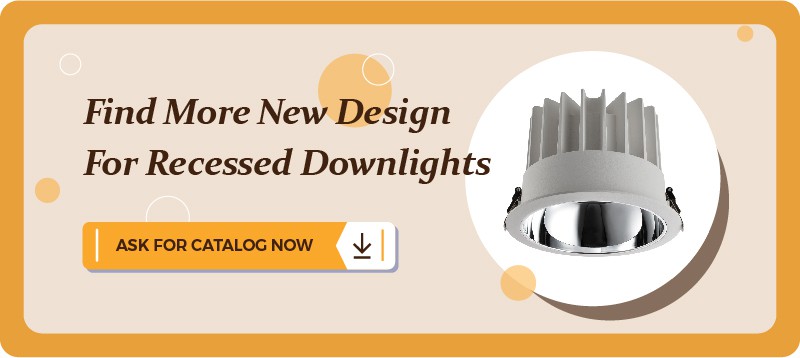
Types of LED Downlights
You should be aware of several main types of LED downlights.
- Recessed downlights
- Surface-mounted downlights
- COB LED downlights
- Adjustable LED downlights
- Dimmable LED downlights
- Commercial LED downlights
- Outdoor LED downlights
- Tunable white LED downlights
As you look at the various types of lights, you will notice variations in the surface that sits by the ceiling. For example, some will flush the ceiling, and others will be shorter than the ceiling. Yet others may stick down slightly from the ceiling, although not much.
You will also notice that some remain fixed at one angle once you install them, while others can be adjusted after installation.
Let’s take a closer look at some types of downlights.
Outdoor Downlights
As the name implies, these are downlights approved for use outdoors. They will have extra protection in their overall design and casing to let them withstand outside conditions, including cold and hot weather and dust. Always carefully consider the IP rating of any downlights you plan to install outdoors.
Commercial Downlights
These are downlights specifically engineered to be durable enough to handle the harsh conditions of commercial environments.
Dimmable Lights
These LED downlights can connect to a dimmer switch or other control of some sort. This lets you adjust the light’s lumens, brightness, or color temperature. That makes this lighting versatile.
Adjustable Downlights
Instead of sitting at a fixed angle, these lights sit on an adjustable base. This lets you swivel the light to some extent. This, in turn, provides the versatility to direct the light in various directions depending on your changing needs.
These are also called gimbal downlights.
COB LED Downlights
COB refers to chip-on-board. COB LED downlights to have a bare chip that directly comes into contact with the substrate. This design improves the lumen density of the light.
Surface Downlights
While most downlights are recessed, surface ones offer an alternative if possible. They are designed to have flatter designs. They can also be decorative.
Recessed Downlights
As mentioned, these sit in a hole in the ceiling, so the bottom is flush with the ceiling (or higher).
Semi-Recessed Downlights
These start in a hole in the ceiling but stick out slightly past the ceiling. Typically, only the bezel protrudes slightly.
Integrated vs. GU10 Downlights
It is also worth mentioning that you can divide most downlights into either integrated or GU10 fixtures. Integrated LEDs contain everything in a single unit, including the LED and fitting. You cannot replace the LED alone, but the unit lasts longer. GU10 downlights are just the fixture without the LED. They are cheaper and let you change the LEDs more easily.
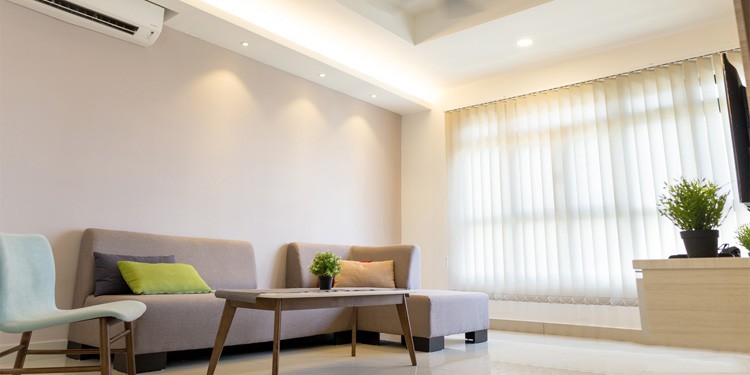
How to Install LED Downlights
As with most other types of lighting, you will get the best results if you have a professional install your LED downlights. That said, those with some electrical knowledge can install them themselves.
Even if you plan to have a professional install your lights, it can be useful to understand the installation process. This will help you set realistic expectations for the process and timeline.
How to Replace an Old Downlight
While you should leave wiring to an electrician, most people can install a new LED downlight in place of their old downlight themselves. To do so, follow these steps:
- Turn off the power. This is essential.
- Disconnect your old light’s power cord.
- Remove the old light.
- Unscrew the cover of the driver.
- Connect your cord and replace the driver cover.
- Connect the new power cord to the main power source.
- Securely push the clips on the downlight’s sides, placing the downlight into its desired spot.
- Turn the power on again.
What If You Don’t Have Holes in the Ceiling?
If you do not already have holes for the LED downlights in your ceiling, you must create these first. You will also need to set up the wiring in this case.
The following will take you through that process:
- Turn off the power to the area.
- Carefully plan the placement of your downlights. Measure carefully and ensure there aren’t wires or joints in the ceiling where you want to cut the holes.
- Cut the holes using a pad saw or plasterboard saw. Be careful not to cut anything that is above your ceiling.
- Double (and triple) check that the circuit is not live. Put the wiring through the hole.
- Connect the light’s wiring with the electrical wire via a connector or checkbox.
- Continue with steps 4 and on from the above process.
Tips and Reminders for Choosing LED Downlights
Because of their popularity, most lighting manufacturers make LED downlights. That fact and the range of types means numerous options are available. The following tips should help you choose the right LED downlights for your space.
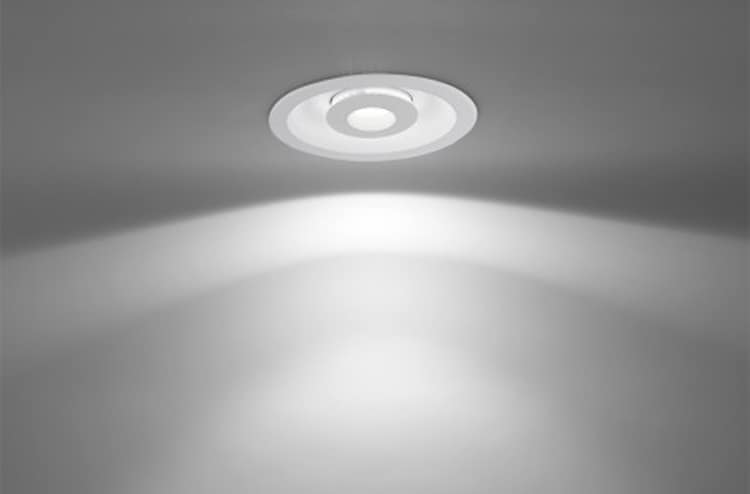
How Many Downlights Do You Need?
One of the first things to consider is the number of downlights you need for your space. Some of this comes down to the light itself, precisely its lumens output and angle. If you choose lights with a larger beam angle, you could install fewer fixtures than if you chose those with narrower beam angles. You can also use fewer if you choose lights with a higher lumens output.
With that in mind, you want to install about one LED downlight for every square meter of floor space. If you prefer to use the area in feet, multiply the ceiling’s area by 1.5. This will give you the total wattage you need. You can then divide this by the wattage per fixture.
Planned Use
One of the most important considerations when choosing your downlights is how you plan to use them. This will help you determine your requirements, such as IP rating, shape, beamwidth, etc.
Shape
Most downlights will be circular, but you can also choose square ones if you prefer. Consider the appearance you want for your space and the shape of the hole you plan to place them in if you want recessed lights.
This is also the time to confirm that its dimensions are small enough to fit in the hole you have prepared for the light.
Beam Width
As mentioned, you can choose how wide of a beam you want your downlight to shine. If you want to install fewer lights, choose wider beams. If you want to install more lights, consider narrower beams.
You may also want to consider a wider beam angle if you want to illuminate the room in general. Consider a narrower beam if you’re going to highlight a particular spot or item in the space.
Light Color
You will be able to choose the light color for your LED downlight as well. Some of these lights have adjustable colors. Otherwise, consider the type of light you want to mimic and choose the appropriate Kelvin temperature.
- 3,000 Kelvin produces warm white.
- 4,000 Kelvin produces cold white. (This is the most common for offices.)
- 6,500 Kelvin produces a shade similar to daylight.

Dimmer or Dimmer Compatibility
Consider whether you want to choose a light with a dimmer built into it. This additional functionality will make the downlight more versatile.
Many lights are also compatible with external dimmers. However, if you plan to use one, confirm that your chosen fixture is compatible.
Color Rendering Index
The importance of the CRI for your chosen LED downlight will depend on where you plan to place it. If it is going to a museum or art gallery, you want a high CRI. The same applies to stores or manufacturing facilities for decorative objects, especially textiles.
If you do not need the shades, to be exact, you will typically be fine with a CRI of 80-90. However, a CRI of at least 90 is ideal if you need the colors of objects to appear accurately.
IP Rating
If you plan on placing your downlight outside, you know you should pay attention to the IP rating. This will help ensure it can handle the occasional rain or dust.
You also want to look at the IP rating for any lights you will place in factories, warehouses, or anywhere else with a lot of dust and particles in the air.
IC and AT Rating
In addition to the IP rating, you should look at your chosen downlights’ AT and IC ratings. These address the issues related to insulation and airflow mentioned as disadvantages of this type of lighting.
IC-rated lights indicate that you can cover them with insulation. This reduces the loss of heat, which minimizes the fire hazard. AT-rated lights are air-sealed. This means the light won’t leak cooled or heated air from the room.
Remodel or New Construction
Looking at the various downlights, you will notice that some are only designed for new fixtures, while some can be retrofitted or work for remodels. Always opt for a retrofit fixture if you need to replace an old downlight. Otherwise, it will not matter.
Appearance
You will always want to consider the appearance of your chosen downlight fixture to some extent. However, the degree to which you do so will likely depend on whether it is recessed. If you select a recessed fixture, you will mostly be concerned with how the bezel or most visible portion looks. After all, the sides will be hidden by the hole’s walls.
If, however, you choose to place the fixture so some or all of it is visible, this may be a larger consideration. Consider materials, colors, shapes, and overall style.
Brand or Manufacturer
Remember that all the benefits of LED downlights only apply if you choose high-quality fixtures. As such, you will want to make sure to choose a manufacturer known for producing quality products. At the least, make sure to choose an ISO 9001-certified manufacturer.
Look for a warranty, which implies that the brand has confidence in its fixtures.
Closing Thoughts
Placing LED downlights is an efficient method of including recessed lighting in your space. LED downlights work well in every type of commercial space and residential property. There are numerous styles to choose from, and you can use them to provide general illumination or highlight a specific object or area.
To learn more about LED downlights and start taking advantage of all of their benefits, contact RC Lighting.
